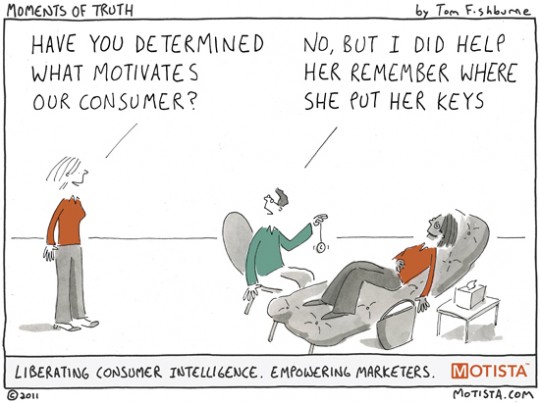Funny Cartoon about Consumer Motivation

The funniest humor is based on truth, and answering the “why?” question is one of the biggest challenges market researchers face. As Motista blogger Alan Zorfas notes,
But the “why” is hard. Unlocking the “unconscious” motivators that lie beneath the surface requires time, money, expertise and “brilliant” insight. We look at our latest Marketoon from Tom Fishburne and empathize with the marketer hero. Her eager disposition hints at the enormous pressure she’s under to get the next campaign into the market fast to impact next quarter results. She impatiently waits for the moment when the consumer “reveals all.”
Zorfas might be reading a little too much into Tom Fishburne’s cartoon, but there’s little doubt that marketers want to get “why” answers via better means than focus groups. Can neuromarketing fill that void? Maybe. One firm, Olson Zaltman Associates, uses a “psychotherapy” technique to dig deeper into consumer motivation. Who knows, maybe hypnosis actually would be worth a try! 🙂
From Moments of Truth Cartoon Hypnosis: Bridging the Connection Gap
